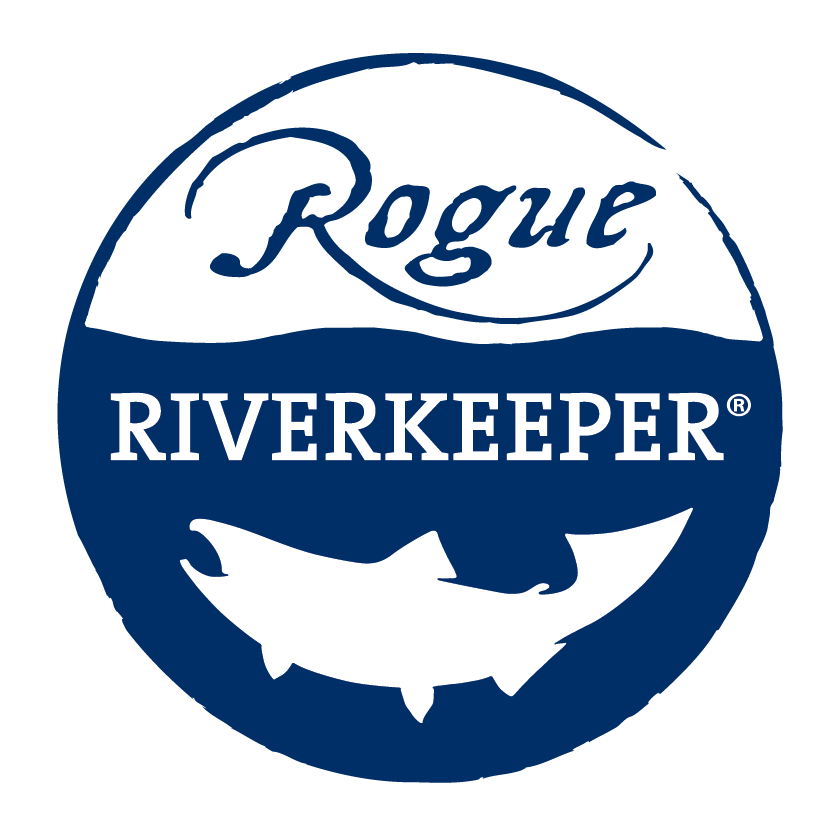Connect with your neighborhood creeks + streams!
How well do you know your neighborhood creeks? In the middle of the coronavirus pandemic, it’s still possible to get outside safely while social distancing and following requirements from the Oregon Health Authority and Governor Brown’s stay at home order for Oregon.
Now more than ever, you might find yourself drawn to your local streams and creeks on your walks and bike rides. If you can safely get outside, this is a great time to get to know your local waterways!
Your neighborhood creek has an important role to play, from adding cold water to providing habitat for fish, that keeps the Rogue healthy.
For many of us in the Rogue Valley, our neighborhood creek is Bear Creek! Here at Rogue Riverkeeper, we’re big fans. Maybe you’ve joined us at a clean up along the Bear Creek Greenway or at a salmon stroll in the fall? Although we’re adapting without our regular in-person events, there are still lots of ways that you can help protect Bear Creek!
The upland Takelma Indian tribe who historically lived in the lower Bear Creek Valley called Bear Creek “Si’kuptpat,” which can be translated to mean “dirty water.” The waters of Bear Creek include 290 miles of streams and more than 250 miles of irrigation canals. Across 361 square miles, all of the water that drains to the mouth of Bear Creek makes up the Bear Creek watershed. This includes lakes, streams, wetlands, and even groundwater! Parts of the watershed are rugged and steep, ranging in elevation from 7,533 feet at the summit of Mt. Ashland to 1,160 feet where Bear Creek meets the Rogue River.
Like the roots of a tree, the small headwater streams and wetlands that flow into larger creeks and rivers are critical to the health of the entire Rogue River.
The waters of the Rogue are connected, from small headwater streams that flow seasonally or only with snow melt or rainfall to irrigation ditches that flow throughout the watershed to wetlands that filter pollutants and store floodwaters.
Unfortunately, many of these smaller waterways are at risk of losing protections under the Clean Water Act if a final rule from the Trump Environmental Protection Agency is enacted. This final rule would strip entire categories of waters from protections under the Clean Water Act, leaving them vulnerable to pollution.
This final rule leaves the entire Rogue vulnerable to increased pollution. Ephemeral streams, fed primarily by snow and rain, would lose protections under the Clean Water Act. Many ditches would also lose Clean Water Act protections, which means that polluters would not be required to have a permit that places limits on pollution that can be discharged into those waters. Outside of the Rogue watershed, but no less important, are the iconic blue waters of Crater Lake. This final rule would remove protections from “isolated” lakes like Crater Lake that don’t have direct connections to waters that are traditionally navigable.
This final rule will leave neighborhood creeks, like Bear Creek, more vulnerable to pollution.
The impacts of this final rule would impact the entire Rogue watershed. As just one example, the Bear Creek watershed alone includes approximately 250 miles of irrigation canals that run parallel to the creek. The watershed includes three large irrigation districts, Talent Irrigation District (“TID”), Medford Irrigation District (“MID”), and Rogue River Valley Irrigation District (“RRVID”). The Oregon Department of Environmental Quality specifically identifies the role that irrigation canals and ditches have on Bear Creek, stating that “the flows in Bear Creek and tributaries are greatly influenced by irrigation water.” These irrigation canals can act as direct conveyance systems for pollution to reach Bear Creek and the Rogue River. Stripping Clean Water Act protections from these types of waterways leaves Bear Creek and the Rogue vulnerable to increased pollution.
In 1996, Oregon Department of Fish and Wildlife estimated that more than 92,000 juvenile steelhead were killed in Bear Creek after the Talent Irrigation District (“TID”) applied an aquatic herbicide to the Talent Canal. This resulted in a landmark lawsuit where Headwaters, Inc. and Oregon National Resources Council Action filed a citizen lawsuit under the Clean Water Act against the Talent Irrigation District. In the case Headwaters, Inc. alleged that TID’s application of the aquatic herbicide without a Clean Water Act permit violated the Clean Water Act. Although TID argued that the irrigation canals were not protected under the Clean Water Act, the Ninth Circuit determined that they were protected as “waters of the United States” and a permit was required to discharge pollution. If, as is likely under the final rule, irrigation canals such as the one at issue in Headwaters, Inc. v. Talent Irrigation District are not protected under the Clean Water Act, it is likely that similar pollution would occur on an even larger scale and directly impact downstream waters, including the Rogue River itself.
Take a virtual walk with Sara along the Greenway and learn more about Bear Creek!
Add your voice to protect neighborhood waterways like Bear Creek!
Ask your legislators to stand up for iconic rivers like the Rogue and stop this rule from going into effect that threatens the health of the river, salmon and steelhead, and our communities that rely upon the clean, cold waters of the Rogue.
The science is clear that the health of larger rivers, like the Rogue, depends on the health of smaller headwater streams and wetlands. The Clean Water Act is founded on two key principles, that waters are connected and that pollution flows downstream. Stripping protections under the Clean Water Act for entire categories of waters leaves them vulnerable to pollution. Add your voice and ask your legislators to stand up to the Trump administration’s efforts to gut public health and environmental protections under the Clean Water Act.

